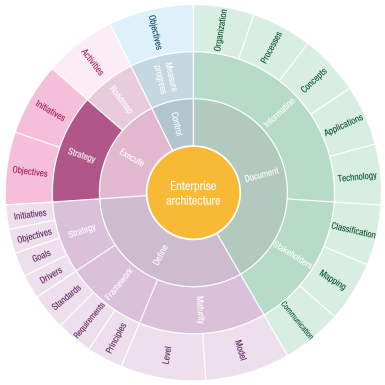Step one: Strategy is about creating an overview that shows the translation of strategy to execution. Once the drivers, goals, objectives and initiatives have been established, determined, or distilled from the existing documents that describe the organization’s direction, it is up to the Enterprise Architect to translate the strategy into a feasible implementation.

Determining the approach
All things considered, a top-down approach would be ideal to use. Hence, this is why the TOGAF Standard states that business goals must be defined in the Preliminary Phase. However, in practice, this often works differently. Because an organization already exists, it usually has a description of its strategic direction. With existing organizations, there is no greenfield situation; an organization exists, runs, grows, and functions. It has to make do with what it has. As a result, a bottom-up approach must be used.
Basically, this means using the strategic agenda that already exists, combined with the goals and objectives that have been set. Through reverse engineering, it is possible to look at what is already being done in the company and relate it to the existing strategic direction. Subsequently, in this way, there is a kind of retrospective accountability.
Whether a top-down or bottom-up approach is used, the method for translating strategy into execution remains the same. Both approaches require an inventory of the organization across all architectural domains. This is outlined in step one (Information) of the first stage of the Implementation Wheel. The inventory can run in parallel with the implementation of the process described here. The inventory is used to map the organization.
Architecture artifacts and deliverables
The first step of stage three (Execute) creates an overview that shows the translation of strategy to execution. This is often done in a spreadsheet format.

